Dovima was without a doubt the most glamorous model of the 1950s. She not only succeeded Dorian Leigh as the highest paid fashion model of her day, but she embodied the image of the worldliness and beautythat defined the tone of the era. She was regal, elegant, unapproachable, yet desirable. She had darkhair and was considered to be an exotic-looking Irish-American beauty. Upon her death in 1963, she died as a hostess at a local pizza parlour in Fort Lauderdale. But even at this point, she was still regarded as a celebrity.
Born Dorothy Virginia Margaret Juba in New York in 1927, Dovima, as she became known, was raised as a devout Catholic in Jackson Heights, Queens. Due to having contracted rheumatic fever at ten, she was confined to bed rest for one year. Her mother kept her home for 7 years to recuperate, which greatly limited her contact with others. In her solitude, Dovima began studying painting. It was during this period that she invited for herself an imaginary friend called, “Dovima”. The only contact that she had with friends in the outside world was through the telephone.
Today there seems to be a bit of a conflict surrounding the origins of Dovima’s professional name. In an article published by Wintrhop Sargeant in 1958, he claims that Dovima’s birth name is Dorothy Horan and not Dorothy Juba. He also claimed that Dovima stood for “Do” for “Dorothy,” “vi” for “victory,” and “ma” for her mother, whom she called “ma”. He claims that she “created” the name for professional reasons. That article was titled, “A Woman Entering a Taxi in the Rain”. However, that really seems unlikely as she invited the name as a child for her imaginary friend when confined to her home to recuperate from her illness.
After fully recovering and getting from under her mother’s watchful eye, Dovima began to explore her surroundings. One day while going to meet a friend in Manhattan, an editor from Vogue approached her. It turns out that the woman was an editor at Vogue. She asked Dovima if she had ever modeled. Accepting to accompany the editor to the Vogue offices, Dovima was subjected to a photographic test. Success!!! The very next day, she had her very first magazine spread shoot for Vogue with fashion photographer, Irving Penn.
Dovima was a hit. Her spread in Vogue established her as an instant star, and not long afterwards, she became the highest paid model of her era. Jerry Ford of Ford Models said, "She was the super-sophisticated model in a sophisticated time, definitely not the girl next door."
She worked with all the hot photographers for all the top fashion magazines. Richard Avedon created a special bond with her, and it was reflected in his work. In 1951, she becamehis favourite model and even a kind of muse after Dorian Leigh quit modelling. Leigh had fallen in love with a Spanish nobleman, and moved to Paris to where she went on to createFrance’s first modelling agency. Among the most famous photos from their collaboration isthe 1955 photo titled, “Dovima and the Elephants”. Dressed in Dior for this picture (the very first dress created by Yves Saint Laurent for Dior), Dovima became the epitome of 1950s haute couture and of Dior’s “New Look”! Taken in Paris, this picture is considered to date to be the most famous fashion picture of all time. Prints of it hang in The Metropolitan Museum and the Museum of Modern Art. She and Avedon worked together until 1955.
According to Richard Avedon, "She was the last of the great elegant, aristocratic beauties...the most remarkable and unconventional beauty of her time…The ideal of beauty then was the opposite of what it is now. It stood for an extension of the aristocratic view of women as ideals, of women as dreams, of women as almost surreal objects. Dovima fit that in her proportions."
Dovima said on working with Avedon, “We became like mental Siamese twins, with me knowing what he wanted before he explained it. He asked me to do extraordinary things, but I always knew I was going to be part of a great picture.”
For Avedon, the feeling was mutual. He said of her, “I loved Dovima. She came from Booklyn and had more elegance than most models. She had the most extraordinary sense of ease. She didn’t have an overpowering energy but neither was she timid. And she had an understanding, a feeling for the clothes. I worked with her for about ten years until Diana Vreeland came to the magazine. Diana felt Dovima had been seen too much and wanted someone new and different.”
Dorian Leigh said of the fusion between Doviman and Avedon, “He used Dovima like a painter uses a medium. She was his medium.”
And Carmen Dell’Orefice, another top model and Dovima’s very close friend said “They had the greatest fantasy affair on paper that the public ever witnessed. Avedon had the skill to metamorphose a fledgling model. He could finish the pieces of her persona.”
Avedon loved working with models who were good actresses, and Dovima was one of the best once in front of the camera. In the pages of Harper’s Bazaar, she appeared to be in the same league of femme fatales such as Salomé, Cleopatra, Salammbô, Delilah and even Scarlett O’Hara. That’s most ironic as she was actually a home body and travelled for work with a husband and her cherished comic books. Under Avedon’s guidance, her face and gorgeous figure was known the world around to all of the fashion and advertising industries. Her image haunted men in an erotic manner.
Dovima appeared in the film Funny Face with Audrey Hepburn and Fred Astaire. The movie-musical was based in part on the life of Avedon. In it, there was also a “Think Pink!” screaming character based on Vogue editor-in-chief, Diana Vreeland. Dovima played the part of a model, who like the real life Dovima, loved comic books. She loved them so much that on a trip to Egypt with Richard Avedon, she brought a huge trunk. Avedon assumed that it was her clothes. He was astonished to learn that it contained Dovima’s comic books. An amusing anecdote from this trip came when Dovima learned that Egypt is in Africa. She said, “It is? Good Lord, if I’d known I was going to Africa, I’d have charged double.”
The Egyptian trip came about when Avedon noted that Dovima bore an uncanny resemblance to the famed bust of the Egyptian pharaoh, .Nefertiti. There he dreamed of doing some of his greatest work with her in front of the Sphinx. During that trip Dovima claimed to have known a moment of mysticism when the Sphinx called to her. Dovima was a bit flighty by today’s standards and at times, fit the stereotype of “farfelu” models. Proof of this is when she nearly fell off of the Eiffel Tower when during a shoot with Avedon during one of her scenes of great drama.
Thanks to her success in Funny Face, Dovima tried her luck in other films. After studying at Lee Strasberg’s Actors Studio, she made many guest roles on television including Bewitched, The Phil Silvers Show, The Man from U.N.C.L.E., The Art Linkletter Show, Dr. Kildare, My Favorite Martian, The Danny Kaye Show and Kraft Suspense Theater.
Dovima officially stopped modelling in 1962, although she announced her retirement in 1959. Unfortunately, she had no money to show for the years of her being the highest paid model of her day. She had allowed her husbands to manage her money, and they squandered it. She never had success with men until late in her life. Friend and model, Carmen Dell’Orefice said of Dovima’s romantic life, “Sadly she could only be with men who beat her. I’d find her on my doorstep black and blue, and I’d take her in and she’d live with me.”
Her first husband, Jack Golden, had been her upstairs neighbour when she was a young girl; however, they divorced in the late 1950s. She then married Alan Murray with whom she had a daughter, Allison. Murray used to beat Dovima regularly. In an article published in Vanity Fair, Mimi Swartz wrote on the beatings, “At times her husband beat her so severely that she could not show up for work. It did not, at first, cut into her bookings.”
After she and Alison moved to Los Angeles in 1960 for her to pursue her acting career, Murray reported Alison kidnapped to the FBI. Dovima lost custody of her daughter during the divorce and never saw Alison again.
With no other television roles or modelling offers in site, Dovima moved to Forte Lauderdale, Florida in 1974 to be closer to her parents. She did odd jobs to earn a living such as hosting at restaurants, selling cosmetics, etc. She did manage to find love in the latter years of her life. She married co-worker, West Hollingsworth in 1983. They two had a total of 12 happy years. There happiness was only interrupted by his death at the hands of cancer in 1986. Having finally found true love, Dovima never recovered from this tragedy.
In 1984, she found employment as a hostess at Two Guys Pizzeria. She worked there until her own death. She died on May 3, 1990 of liver cancer.
Upon her death, Dovima had known several lives as an invalid, a top model, wife, mother, actress and then hostess. No matter, her legacy and contributions to fashion and to modelling remain among the most cherished. She was a model, a supermodel and that forever and always…
“Dorian Leigh said, “She didn’t understand she could be someone without it. She never really felt in control of what happened to her.”
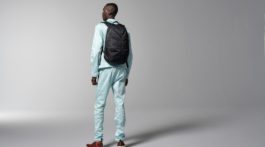
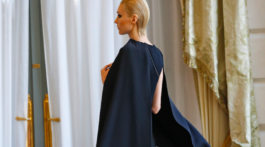
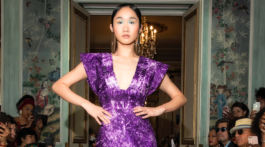


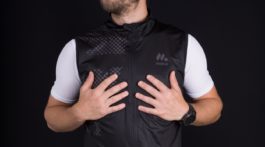




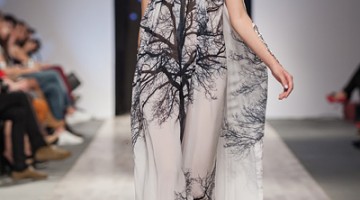
No Comment